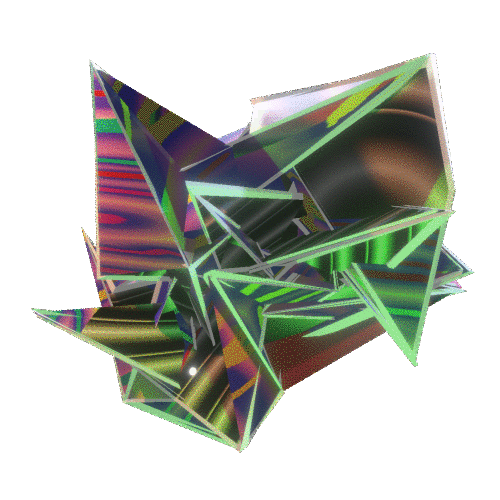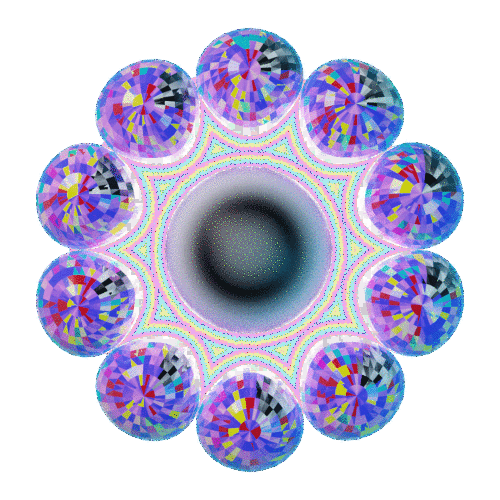Meet-cute with a tree
Birch, Scots pine, bog myrtle, bracken, creeping ladies’ tresses, glittering wood moss and clumps of yolky chanterelles people this forest. There is no back or foreground. The forest is continuous, alive. Trees communicate with each other, share food and drink, send warnings, protect the young and old and weak.
That day, the forest was a stage. It was still, any slight breeze broken by the tree canopy; the birdsong and distant noise of people walking their dogs happened off stage. The ground in the forest was not flat, nor were the trees all upright. I steadied my camera on a monopod, watching, listening. Listing too, balanced on the edge of a deep rectangular pit, all that remained of a long abandoned house. The pit was full of wood moss and bracken, but still, I might have sprained an ankle had I tripped on a root and over-balanced. I wanted to catch hold of the dead tree standing by me on a shard but it wouldn’t hold my weight. It was rotting, giving life to other trees, ants, mycelium, bugs and birds.
Fell opens with a meet-cute between a man and a large branch of a tree. A meet-cute is a technical term in cinema for the first meeting between two protagonists who will form a romantic bond later on in the film. A man enters the frame, pushes and is pushed, easing the tree over without breaking it. Each body moves and is moved by the other. The tree branch seems to come to life in the human caring for it, in the gentle handling of its human-life-like limbs and scale. The man’s clothes, gloves and shoes form a protective barrier but also suggest a dignity and respect—this isn’t about the man trying to be subsumed into the forest, into wild nature, or the tree becoming an extension of the man.
The bough swinging between limbs and hands, the whistle of air and wind, the rhythm of breathing, the cracking bark muffled by soft, spongy undergrowth, is a dance of life and death. For a while, the dead wood becomes animated for the camera. The tree comes alive, but of course it is already, even though it is dead. No longer recognizably oak, ash, birch or pine, the skeleton will soon be covered in borrowed foliage, home to insects, birds and mammals. Matter is animate, vibrant even. Sapped of its own life, the tree lives on in others, imbibed through soil, fungi, lichen, worms, water and air, in the entangled forest biome.
The camera imposes a frame and time that brings into focus this movement, this anima of the forest. The anima happens somewhere between the man, the dead tree, the forest, and the observer. The anima at work in the interdependent lives of the forest is revealed to the observer in the intimate dance of man and tree. The observer, through the presence of the camera, becomes a part of the ecology of the wood, at the very least its psychic ecology. Fell suggests a kind of animation at work in the wood, in and around and outside the image. It is reassuring somehow, to watch and be part of this play, a play with image capture and carbon capture, a play with words. Is it erotic? Is this dead or alive, play or serious? I can be enamoured with instead of enarmoured against the world.
Within the frame, the objects—human, trees, branch, floor—are in motion. The film is not exactly animation or live action—maybe a kind of resuscitation. In stop frame animation objects are moved or manipulated between shots to produce an illusion of movement. Here the manipulation happens in front of the camera. The life of the branch takes a new turn in the hands of the performer and the eyes of the beholder. Filming anything is a move to animate, to activate, to put something in motion, twice or even thrice over: in the act of filming, in the anticipated future watching, feeling and reflecting. But then, you might say, everything is animation. So what is the opposite of animation? Inanimate is not the same as no longer animate—stopped, halted, poised or paused. The still image is obviously not the opposite, but a part of the picture, the frozen image of the not-yet animated, not yet activated.
Animation and ecology
Would the ivy on my wall grow over my hand if I sat still long enough? I’ll never see the tree grow but only grown, except in natural history documentaries using time-lapse video. Life and death in the forest is bound up with the movements of microscopic mycelium, sap rising, worms, squirrels, mice, insects, humans and everything else. Digital animation (of all kinds) is often used to help describe current knowledge of the various movements of the natural world which are at scales too small or large, slow or fast for humans perceive. This isn’t what I mean though. The anima of the forest is more than the sum of its movements. To know something of the living forest you have to spend time in it, to move about in it, to breath it, to smell and feed from it, to be a creature of the respiring, unobserved life of the forest. And then, to imagine the movements of the infinitely small and infinitely large is a poetic leap of animation that our minds are quite capable of.
The artifice of animating still objects to make them look like they are moving sometimes feels like a way of repairing a lost capacity to connect with things in the world, to imagine and feel movements that we cannot or can no longer, perceive or understand. Humans are not outside or separate from the worlds we live in. “Nature” is a fraught category, often opposed to “culture”; some say nature is no longer, but others (and I concur) say it is everything, whatever word you decide to use. When we keep ourselves to ourselves, apart from the natural world, ignore it, stop caring, lose our feel for it, try to control, contain, bound nature, we lose track of ourselves. We lose, we are lost and a lot else besides.
So, what can animation do or mean in relation to ecology, or ecosophy? Ecosophie is a term coined by Félix Guattari, bringing ecology and philosophy together in one concept. In his book Les Trois Ecologies[1], Guattari argues for an ecosophy that attends to and seeks to repair the “three ecologies”: environmental, social and mental or psychic ecology. A collection of Guattari’s ecological writings is gathered in Qu’est ce que l’écosophie?[2].
Is animation only representation of movement? Or is it making something move that doesn’t move? Or wasn’t moving? It needn’t be only about representation or visual representation. You might animate someone or yourself with something, make it necessary for them or you to move. Push someone, edge them towards something, towards a feeling, a response, an appreciation, a love; make them and you care. And if you care, then well, you can do lots of things. This is a kind of animation, one aspect of activism. Activism implies the need for and possibility of transformation. Even when the odds are stacked against it, activism implies that by putting your body on the line to act in the service of a reimagined world you just might change other people’s minds and actions.
If animation is moving things that are still or dead, but nothing is dead, just altering from one state to another or dispersing like spores, cells, gases or atoms—then is everything already animated? Animation might be useful for appreciating the dead as living on, the still as about to move, artifice as lively, transformation as a possibility.
Animation for activism
“The extraction of toxic heavy metals for use in digital devices has [also] fuelled genocidal conflict around the world, and will likely render many environments uninhabitable.”[3]
I claim animation for purposes other than mining, electronics, Artificial Intelligence or warfare. I claim the real intelligence of animation, of the feelings and bodies that animate. I claim animation for making leaps of the imagination, for appreciating the in-between moments and the feel of things and for repairing broken worlds. Instead of touching the keyboard or screen, touch bark, touch a branch of a tree or stroke the surface of a leaf. Is it shiny or furry? Rough or smooth? Do the veins of the leaf spread off an axis, or gather to a point at the base of the leaf? Other things you can’t do with a screen: enjoy the dark—when edges are lost or blurred; be cold and shiver to warm up; tickle, wriggle or wrestle; sniff, taste, sting, rub, soothe, scrape, scratch or bite.
We shouldn’t reduce the physical living world to materiality. Ecology as animation imagines—elegantly, simply, correctly—matter as vibrant, tracing movement and feeling between things, living, dead or neither. It recognises that nothing is still or in one place or isolated, foreground or background.
I haven’t eaten this tree, but I have taken it into my body through love and touch and play. I haven’t turned it into wood by making a chair or a table, or a sheet of laminate to spread across the floor. The wood has its own story, or rather it doesn’t and nor do I. Story is how I make sense of it but actually it doesn’t need a story. We shared a place and moment, and then went our separate ways, forever tied together with gossamer threads of memory and dust and sweat.
Activists suspended high up, nesting in trees in ancient woodlands to prevent their destruction, draw on animism. They recognise a metaphysical challenge to opening a new coal mine, building an airport or railway line. Activists tying themselves to trees is a popular form of environmental activism in England since the activist Swampy in the 1980s climbed trees to protest against highway building. It is more widespread today, in France for example and in England against the building of the so-called HS2 High Speed Railway line (2020, http://stophs2.org/). These tree-dwellers are animated by a feeling, an understanding, that their lives are connected to the living, dying woods, that infrastructure is not man-made, but made together with and in the environment, with lives, matter, weather. And they care.
What is left for culture after ecology?
What and where are we as humans in this understanding of ecology? Are we just in the way, interrupting, destroying the animation, the regeneration or recovery of environments, the evolution and thriving of species? Do we think of culture as separate in order to believe we have made it by ourselves, as self-sufficient humans? Is this really where value comes from? Right now using our natural abilities, affordances, desires and learned skills to create food, medicines, artefacts, tools, buildings, shelters, social structures, rituals, is fraught with danger and risk. How can we appreciate contemporary culture at a time when humanity (by no means all humans) through capitalism is causing such destruction of the natural world and suffering?
I find it very hard sometimes to feel part of nature, even though I know intellectually and through many of my experiences that I am of course. It is often easier to recognise or identify with or through culture (that we often separate out from nature to pat ourselves on the back that we made such things). But we are similar to other life, and need to respond to and listen and be cared for by the lives around us, by the living environment. We are part of nature whether we feel it or not. But I love the pleasure of feeling it, experiencing it, seeking knowledge of it in whatever ways I can. Like other living beings—mammals and birds especially but also trees it turns out too—humans are very good at caring when we want to be. Sometimes we almost can’t help it.
We cannot afford to despair, otherwise who will care? Care don’t despair.
There isn’t necessarily anything wrong with anthropomorphism. It is not so good when it is about controlling or patronising or infantilising the other. But it can be a step towards caring, towards recognising the reality and subjectivity of the other and one’s own connection to things in the world that seem utterly strange and different and not-human. Isn’t it worse to make everything into a machine or a resource? That’s the dead-end of utilitarianism. If objects and other beings are given life (or rather their role in multiple livings is appreciated and recognised) then they can be loved sometimes or hated sometimes, but not ignored. It is a step on the way to appreciating and accepting the otherness and unknowability of another’s experience. A forest is a good place to start.
Perhaps in the beginning we made a clearing in the forest, a space to be human in and now the clearing has cleared away the forest.
We need the rustling of forests again, the long lives of trees, the air, food and weather they make. We can be part of the anima of the forest again with our swinging legs and arms and trunks, stumbling, mumbling, tumbling, falling; slipping, sliding, clambering, striding or resting. Our skin and bark, our voices and echoes, our breathing and the depths of the soil, the leaf litter, moss and lichen, let us lose and find ourselves among the trees.
Ruth Maclennan
[1] Félix Guattari, Les Trois Ecologies, (Paris: Galilée, 1989).
[2] Félix Guattari, Qu’est ce que l’écosophie? (Paris: Editions Lignes, 2018).
[3] Tim Ingold, Correspondences: Knowing from the Inside (University of Aberdeen, 2017), 21.




